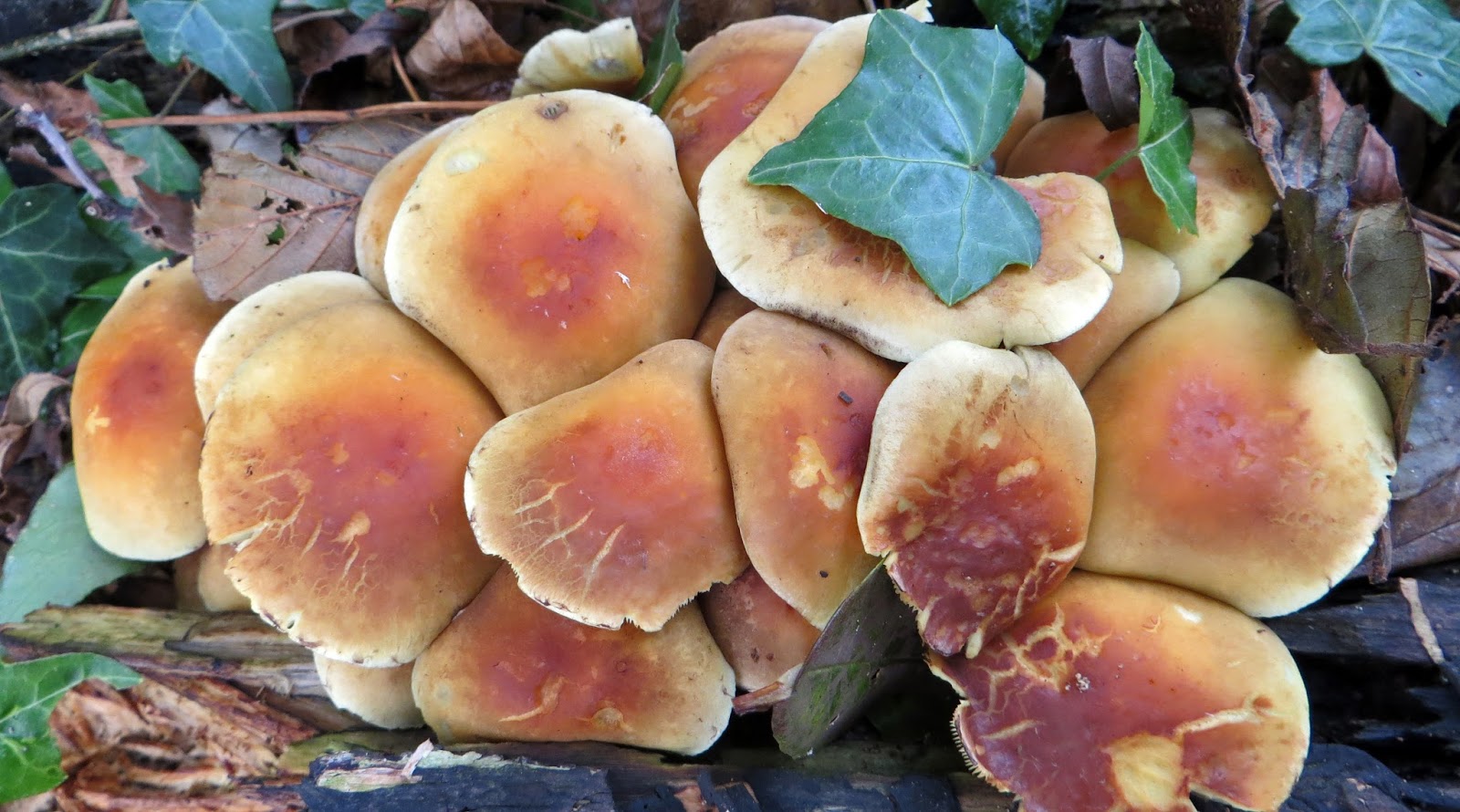Some of you will remember my fascination
with the fungi I discovered everywhere during my strolls around Auckland
Well, of course, I’ve done a spot of
‘shrooming since I landed in Blighty at the end of October so, now that the
English autumn has well and truly passed over into winter – we had minus 3
degrees Celsius overnight, I thought I’d share some photos of the fungi I’ve
encountered during my walks in Cheshire woodlands.
Many of these fungi varieties are the
same as those I found in New
Zealand
Here are some I’ve found …
Ascocoryne
sarcoides is commonly known as Purple Jellydisc or Jellydrops, making it
sound a little like a sweetie though I wouldn’t want to eat it. Its purple
colour provides another visual treat amongst the dead trees it inhabits.
Auricularia
auricular or Wood Ear. This fungus can often be found growing on the elder
tree and, according to wikipedia, the fungus got its original common name of
Judas’s Ear from the belief that Judas Iscariot hung himself from an elder
tree. Over time, the epithet Judas’s Ear changed to Jew’s Ear. I guess that’s
not considered politically correct these days, hence wood ear.
The stereum
hirsutum is one of the most common fungi in Britain
Hypholoma
sublateritium. Commonly known as Brick Caps, these little fungi like to
cluster together on stumps and logs. I hope I’ve got this identification right
as there seem to be a huge number of similar looking small round mushrooms!
Xylaria
hypoxylon. You might think Candle Snuff got its common name from its
physical resemblance to a candle but no! This tiny fungus is, in fact,
bioluminescent – in a very dark place it can be seen to emit light because the
phosphorus that accumulates within the mycelium reacts with oxygen and other
chemicals in the fungus.
Collybia
dryophila. Dryophila means ‘lover of oak trees’ so you can tell this
fungi’s preferred tree but it can also be found on other broadleaf trees and on
conifers. It has several common names: Penny Top, Russet Shank and Russet
Toughshank.
Coriolus
versicolor is a very common fungus, found throughout the world and, as the
name implies, includes a wide variety of colours. It is often used in
traditional Chinese herbal remedies and is commonly called Turkey Tail.
Commonly known as the Deceiver, laccaria laccata varies in colour from red
and pinkish brown to orange so its looks are deceptive (hence that common
name), making it hard to identify with certainty and meaning I have probably
got it wrong!
Nycena
galopus var candida (i.e. the white variety) is more often known as
the Milking Bonnet and does a very good job at decomposing leaf litter.
I found this hypholoma fasciculare (or Sulphur Tuft) in its most typical position, growing in a tight clump on the side of an old tree stump. Apparently, it tastes bitter and is poisonous, causing vomiting, diarrhoea and convulsions so don’t be tempted to have a nibble.
Lactarius
torminosus, also known as the Woolly Milkcap, varies in colour from pink to
ochre and, as my image shows, it often has concentric rings of alternating
bands of colour. It’s also quite shaggy when young.
I'm very
much an amateur when it comes to identifying the different species of fungi so
if you think I’ve mislabelled something, please do let me know in the comments
section below.




.JPG)

.JPG)



























.JPG)

.JPG)

s.jpg)




















